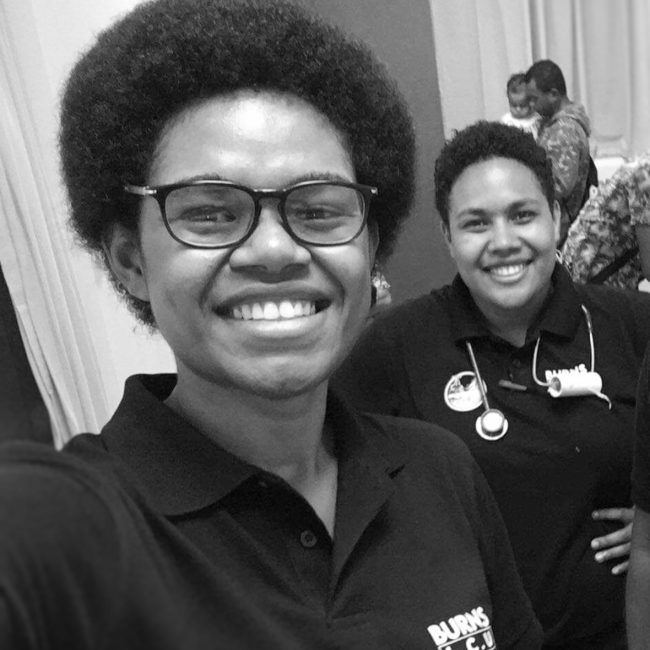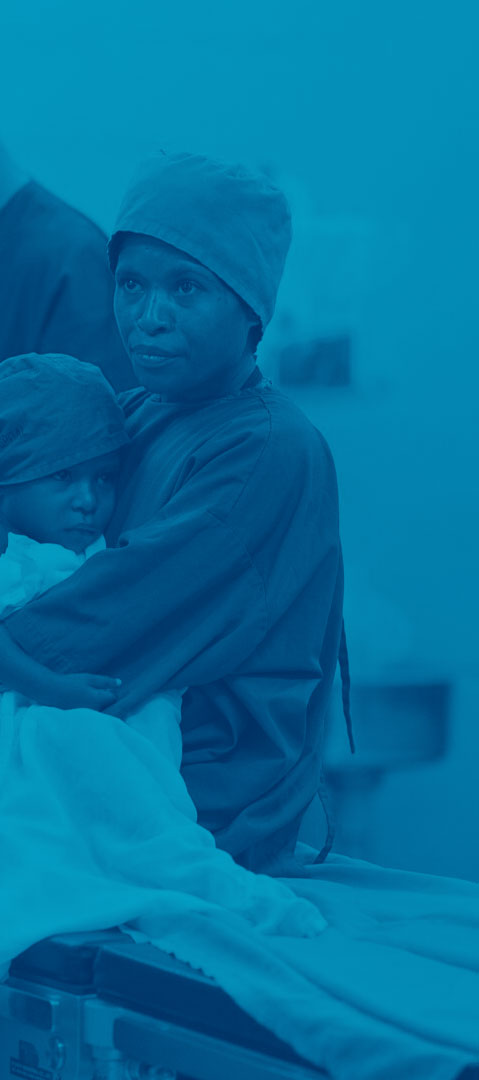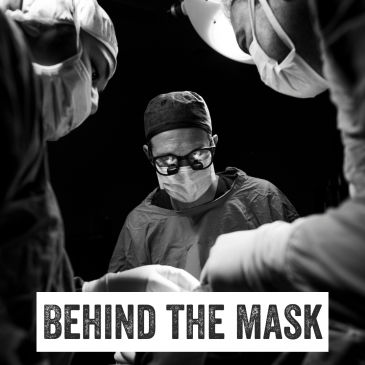As part of Interplast’s Behind the Mask series we seek to share the dedicated experiences of our volunteers and partners in over 25 countries. Akisi Dovibua, Physiotherapist and Interplast partner, shares insight to her role at Colonial War Memorial Hospital in Fiji.

Bula vinaka (Hello) My name is Akisi Dovibua, I studied at the Fiji National University (College of Medicine, Nursing & Health Sciences) and graduated in 2017 with a Bachelor’s Degree in Physiotherapy. I live in Fiji where I have worked as a Physiotherapist at the Colonial War Memorial Hospital (CWMH), in Suva, Fiji for the past couple of years. CWM hospital is the biggest hospital in Fiji and is a tertiary referral facility and teaching hospital for the Fiji School of Medicine and Health Sciences. It is a 600 bed hospital and I look after all the patients admitted and treated by the Plastics Team including Hands and Burns (HBP).
What is the best part of your position?
The best part of my position is that I learn to work in a Multidisciplinary Team to ensure that all clients under Plastics receive optimum care. At times during my lunch hour I attend surgical procedures for my clients just to help me tailor their post-operative Physiotherapy program and it really makes a huge difference on their rehabilitation.
What makes you happy?
One of the things that makes me happy is when my clients make progress day by day, getting back to their daily activities and learning to be independent again. My mentor, Jenny Ball always reminds me, “It is a voyage of discoveries” and that motivates me every day to give the best standard of care regardless of my circumstances.
What is challenging about your position?
It’s not always a smooth sail, being the sole Physiotherapist overseeing HBP can be so draining both physically and mentally. This is because of the lack of man power since it is a specialized field and I am the only trained personnel in treating HBP cases with the ratio of 1:10 seen for HBP cases alone daily.
My routine would start with clients in the East Wing of the hospital (ICU, Burns, Acute surgical and Acute Medical ward) before then moving to the other three wings (North, South & West Wings). This is another challenge, as the clients are not in one ward. Therefore, I have to move my equipment from ward to ward, which can be time consuming.
What sort of conditions do you treat?
I treat inpatient Burns patients and Hand injuries and complications, as well as attending Hand Clinic and treating Outpatients. I refer country patients to their local Physiotherapist providing advice on protocols and splinting.
What are some of the successes in the past couple of years in your position?
Prior to signing my contract for the position, I was attached for 5weeks at the Royal Hobart Hospital in Tasmania mentored by Jenny Ball before we presented a paper together at the Australian & New Zealand Burn Association (ANZBA) Conference in Hobart.
Being the sole Physiotherapist working on HBP injuries, I’ve travelled with the CWMH Burns Team around some parts of Viti Levu to create awareness on Burns.
The Team also successfully hosted the first local Burns Awareness Conference in June 2020 where participants were medical professionals.
What are some medium term (1-3 years) goals you have?
One of my priorities right now is to further my education within the next 1-3 years. I would like in future to become a specialist in the management of hands, burns, and plastics therefore the first step to achieving that goal is to further my studies.
Upon achieving that goal of becoming a specialist in HBP, I plan on writing research papers on case-based studies on my area of work here in Fiji, predominantly the hand, burns and plastic cases.
Another specific goal I would also like achieve is to help facilitate teaching and educational sessions to train colleagues who are also interested in becoming HBP physiotherapists. Training other colleagues would also enable me to have a team of specialized HBP therapists and maybe in future allow the team to have a department or office of our own.
Do you have any memorable patients? Can you share a little bit of their story and your involvement with them?
I would say that my most memorable patient was my first client as a HBP Physio volunteer in 2018. She was a 65 year old lady who was a victim of a burning warehouse. She had mostly inhalation burns which severely damaged her lungs and windpipe, and she had to be on a ventilator for the duration of her stay. I was treating her for more than 2 months through breathing exercises to prevent lung complications. Then we progressed on to mobility in bed exercises, sitting and standing exercises until she was able to breathe on her own and also move out of bed. It wasn’t an easy journey for both of us since she was going to be dependent on puffers for the rest of her life to help her breathe. One of the things she taught me was to be grateful of the gift of life. She had faith that she would overcome the situation she was in and on discharge she walked to the car independently. A year later she visited the Burns Unit with sweet treats as her token for appreciation.
What are some of the unique challenges posed by COVID-19?
The entire department was relocated to a new wing of the hospital during COVID; reason being the old Physio department has been converted into COVID Isolation Ward. Therefore, I share the work space with five other Physiotherapists in the East Wing of the hospital since I was not allocated a work space.
Whilst visiting my family in the North, Viti Levu had the second outbreak and restrictions were put in place that resulted in the borders closing. Therefore, I am currently serving in my containment zone in Labasa Hospital, looking after the surgical and burns cases.
How has Interplast been involved with your work?
In March, 2018 a team from Interplast (namely Dr Frank Kimble – Plastic Surgeon, Jenny Ball – Certified Hand Therapist, Melissa Parkin – Speech Therapist) visited the CWMH and I had the opportunity to work with them. Through this attachment I was able to gain extensive knowledge and skills in treating HBP clients. They also provided the necessary equipment and resources which we were trained to use. Since then Interplast has been a major contributing factor to my work in terms of donating equipment for continuous online training.
When I need assistance with cases, I am able to communicate with members of the Interplast team and they are always able to provide assistance.
I am undergoing training under the tutorship of Certified Hand Therapist, Jenny Ball (Feb 2018 – ) from Interplast. Training involves 2 weeks per year of one-on-one onsite tutoring and skills development along with weekly or more frequent remote mentoring.
With also the help of Interplast, I was able to become a member of the American Hand Therapy Association (AHTA) in 2020 and the International Federation Society of Hand Therapy (IFSHT) earlier this year.



